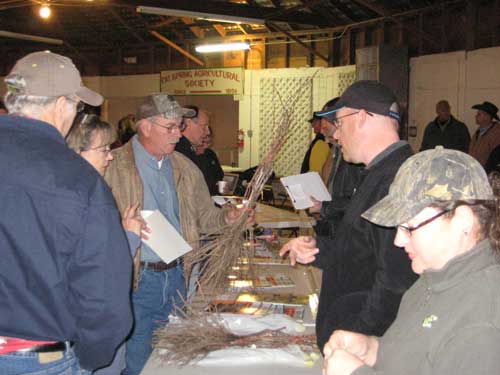
Texas Gulf Coast Wine Country – Old Place, New Opportunity
It was cold and damp this morning, but after yesterday’s even wetter and colder tour of Jerry Watson’s vineyard in Cat Springs, the warmth in the Cat Springs Agricultural Society hall was building with the crowd. The weather was familiar to me. It was a winter in wine country that I had previously experienced, not in Texas, but rather in Sonoma, Napa and Russian River wine regions of northern California.
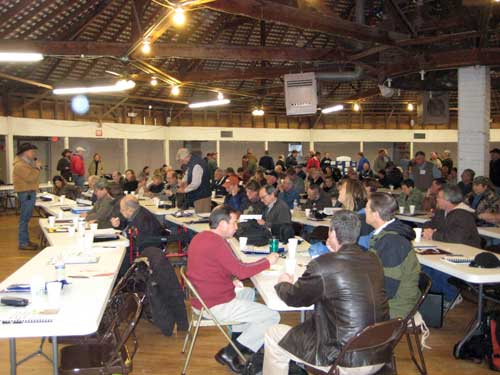
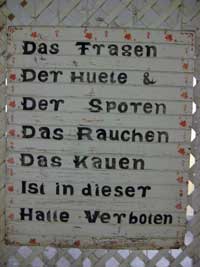 The hall was packed with novice and experienced grape growers with many intrepid people seriously considering getting into grape growing. They assembled for the 18th Annual Gulf Coast Grape Growers Field Day. The crowd grew to a record attendance of over 175 people with Texas AgriLife Viticulture Program Specialist Fritz Westover still getting calls on the cell phone asking if the meeting was still on day and how to get to it.
The hall was packed with novice and experienced grape growers with many intrepid people seriously considering getting into grape growing. They assembled for the 18th Annual Gulf Coast Grape Growers Field Day. The crowd grew to a record attendance of over 175 people with Texas AgriLife Viticulture Program Specialist Fritz Westover still getting calls on the cell phone asking if the meeting was still on day and how to get to it.
The Cat Springs agricultural society was founded in the 1830s by German immigrants involved in a wide range of farming operations including grape growing. This was the start of the Texas tradition of agricultural extension service; where to go to get help on soils, crops and, yes – even grapes.
Yesterday’s vineyard tour highlighted the sleeping grape vines nearly ready for pruning. These were vines of two grapes that can truly handle the hot humid Gulf Coast climate and make award winning table and fortified wines: Blanc Du Bois (white wine grape) and Black Spanish (also called Lenoir – red wine grape).
Jerry Watson has made substantial innovation over the years spent hands-on in his vineyard. He has developed growing methods and a special trellising system that spreads out the canes and leaves of the grape vines to fight mildew and rot, and promote even ripening. This trellis system is gaining advocates and users, and has become known to growers across Texas as the “Watson System”.
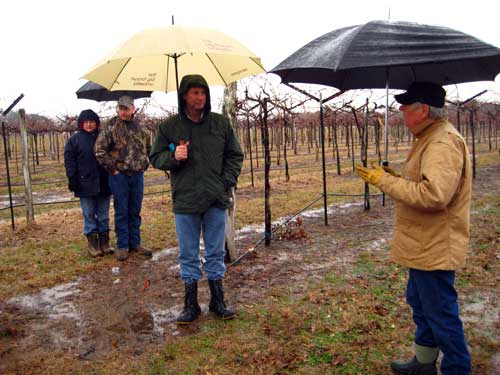
After the tour we caravanned over to Bob and Jeanne Cottle’s Pleasant Hill Winery in Brenham, Texas for a tour and tastings of Pleasant Hill bottled wines and a few barrel samples. Bob is working on his red blends that incorporate conventional grape varietals like Cabernet and Merlot and also varying additions of locally produced Black Spanish.
The evening was spent at Jerry’s house for a paste dinner, tastings of wines from the Gulf Coast, other sites in Texas, France and Italy. The reception was attended by Jerry, area growers, and some of the AgriLife extension staff in viticulture and enology. The Newsom’s (long time Texas High Plains grape growers) fought the winter weather Texas High Plains growers and made it in time for dinner. As the evening came to an end, my bunk mates (Fritz Westover, grape grower Robert Smith, and Texas state enologist Mike Sipowicz) and I meandered to Jerry’s second floor “bunk house” and bed down for the night. Good night John Boy…..
For more information on Texas wine grape growing, go to: http://Winegrapes.tamu.edu

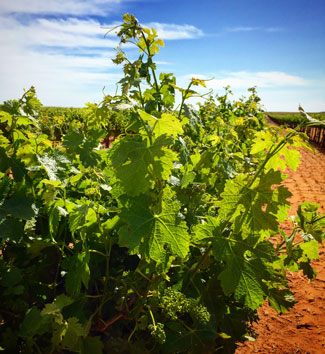
that just sounds like a damn good time….. tiberia
It was a good time. And a lot bigger crowd than the last 2 times I’ve attended.
Even though the weather was cold and rainy, there was a warm group like you would get most places in this business.
Great Fun, Great friends, great Blanc Du Bois
Janice & Neal
All,
Thanks for the comments. It was a great meeting with a wonderful group of people that are working hard to evolve the wine and grape growing industry in Texas.
I particularly likes Charlie Simss presentation on the sensory perception of Blanc Du Bois. First, I learned the correct spelling of the name of the grape (with a capital D in the middle). Secondly, the perception of quality in BDB was found to be associated most closely with Apple and Pear-like characteristics, secondly to Grapefruit and not toward britter and astringent characteristics and a very negative association with oxidized and phenolic qualities.
This is precisely what my 10 years of BDB tasting shows the evolution that BDB has been – higher and higher quality. Today’s BDB wines from many wineries are quality products capable of competing in the marketplace with any other of the noble varieties of vinifera.
Russ
We are interested in going to the vineyards in the spring around the Hill Country. Can you give us some “out of the ordinary” suggestions?
Bobbi Kirlin